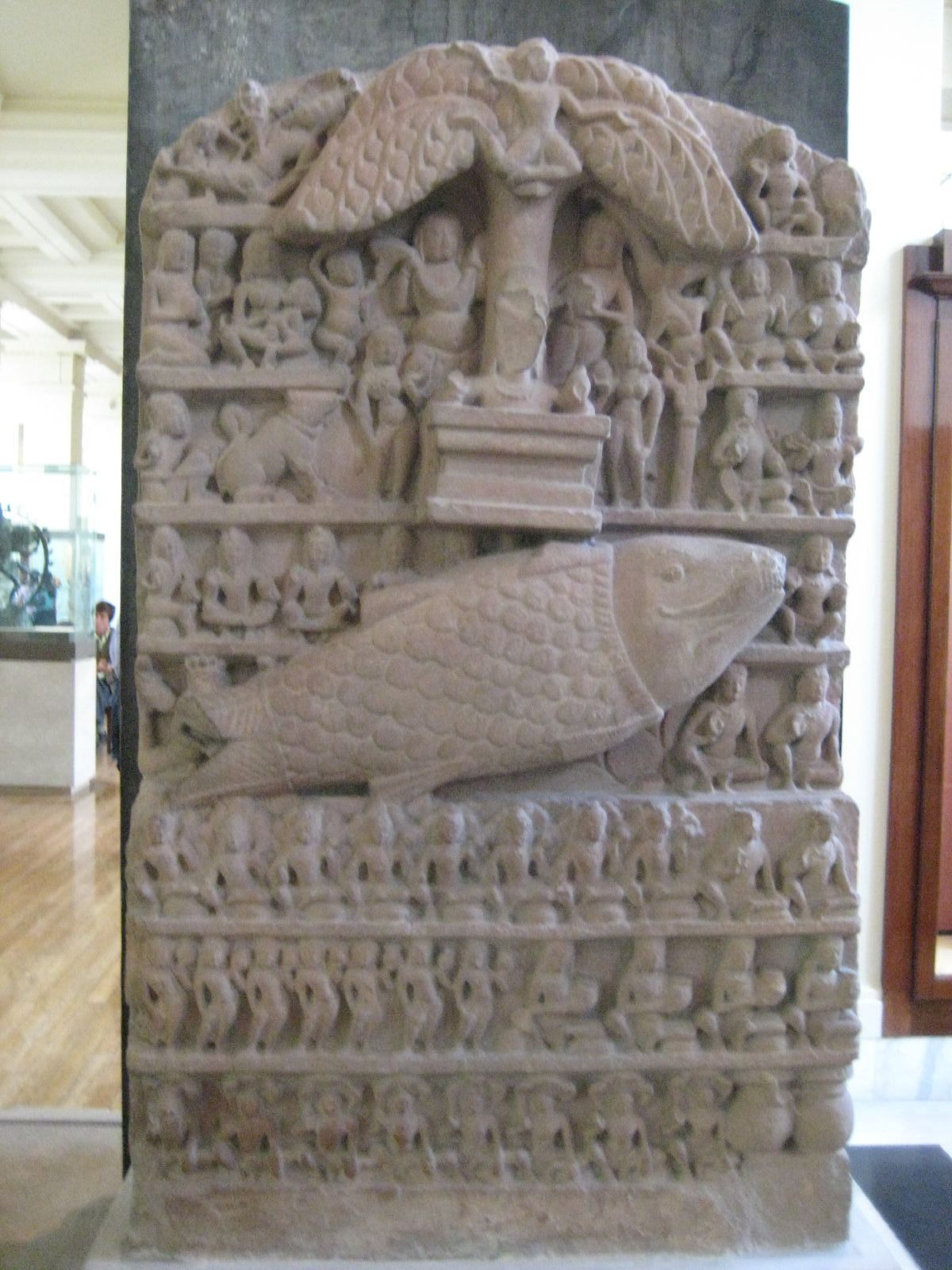Birth of a Hero
Carrying that theme "the more things seem different, the more they are the same" I bring you three different myths of heroes from three different ancient civilizations from three vastly different ages but with bafflingly similar birth stories. These three stories propagate the thesis that all things come from THE ONE, in my humble understanding of such things. Even though each legend is unique, fitting comfortably into its own sphere of culture and mythical grouping, certain details are strong and remain constant in all three civilizations. I wonder what was so important about these unanimous details that would not let the three cultures separated by time, geography and philosophy tamper with them, even while utterly changing the trappings surrounding the details.
The Common Theme: The newborn hero is the young sun rising from the waters, first confronted by lowering clouds, but finally triumphing over all obstacles.
SARGON
Probably the oldest transmitted hero myth in our possession is derived from the period of the foundation of Babylonia (about 2800 B.C.) and concerns the birth history of its founder, Sargon the First.
Sargon, the mighty king, King of Agade, am I. My mother was a vestal, my father I knew not, while my father's brother dwelt in the mountains. In my city Azuripani, which is situated on the bank of the Euphrates, my mother, the vestal, bore me. In a hidden place she brought me forth. She laid me in a vessel made of reeds, closed my door with pitch, and dropped me down into the river, which did not drown me. The river carried me to Akki, the water carrier. Akki the water carrier lifted me up in the kindness of his heart, Akki the water carrier raised me as his own son, Akki the water carrier made of me his gardener. In my work as a gardener I was beloved by Ishtar, I became the king, and for forty-five years I held kingly sway.
MOSES
The biblical birth history of Moses, which is told in the second chapter of Exodus, presents the greatest similarity to the Sargon legend, even an almost literal correspondence of individual traits. Already the first chapter (22) relates that Pharaoh commanded his people to throw into the river all sons that were born to Hebrews, while the daughters were permitted to live; the reason for this order is given as fear of the over-fertility of the Israelites.
The second chapter:
And there went a man of the house of Levi, and took to wife a daughter of Levi. And the woman conceived, and bare a son: and when she saw him that he was a goodly child, she hid him three months. And when she could not longer hide him, she took for him an ark of bulrushes, and daubed it with slime and with pitch, and put the child therein; and she laid it in the flags by the river's brink. And his sister stood afar off, to wit what would be done to him. And the daughter of Pharaoh came down to wash herself at the river; and her maidens walked along by the river's side; and when she saw the ark among the flags, she sent her maid to fetch it. And when she had opened it, she saw the child and, behold, the babe wept. And she had compassion on him and said, this is one of the Hebrews' children. Then said his sister to Pharaoh's daughter, Shall I go and call to thee a nurse of the Hebrew women, that she may nurse the child for thee? And Pharaoh's daughter said to her, Go. And the maid went and called the child's mother. And Pharaoh's daughter said unto her, Take this child away, and nurse it for me, and I will give thee thy wages. And the woman took the child, and nursed it. And the child grew, and she brought him unto Pharaoh's daughter, and he became her son. And she called his name Moses: and she said, Because I drew him out of the water.
KARNA
A close relationship with the Sargon legend is also shown in certain features of the ancient Hindu epic Mahabharata, in its account of the birth of the legendary hero Karna.
The princess Pritha, also known as Kunti, bore as a virgin the boy Karna, whose father was the sun-god Surya. The young Karna was born with golden ear ornaments of his father and with an unbreakable coat of mail. The mother in her distress concealed and abandoned the boy.
"Then my nurse and I made a large basket of rushes, placed a lid thereon, and lined it with wax; into this basket I laid the boy and carried him down to the river."
Floating on the waves, the basket reaches the river Ganges and travels as far as the city of Campa.
"There was passing along the bank of the river, the charioteer, the noble friend of Dhritarashtra, and with him was Radha, his beautiful and pious spouse. She was wrapt in deep sorrow, because no son had been given to her. On the river she saw the basket, which the waves carried close to her on the shore; she showed it to Adhirath, who went and drew it forth from the waves."
The two take care of the boy and raise him as their own child.
What interests me is that Karna and Sargon were born as princes/demigods and raised as commoners then had to fight their way up to king-hood again, whereas Moses experiences the opposite phenomenon. Would that be a cultural more? And if so, for what?
(source material and some paraphrasing from Sacred Texts.)













